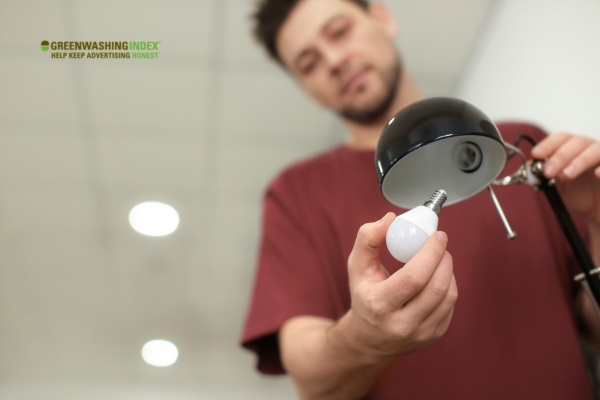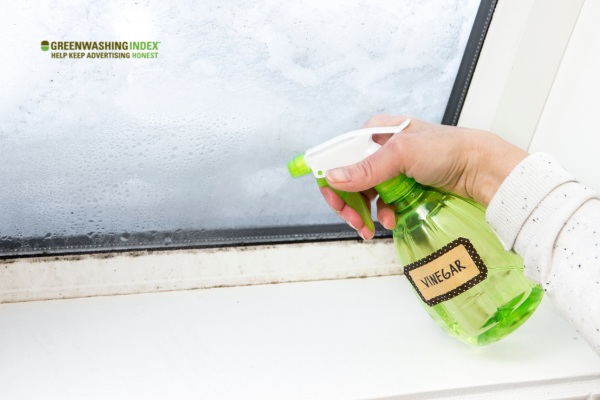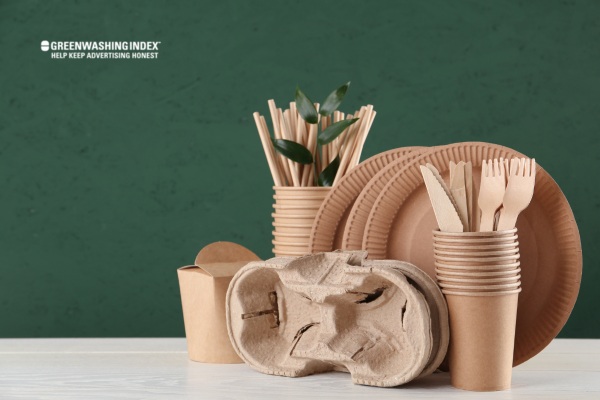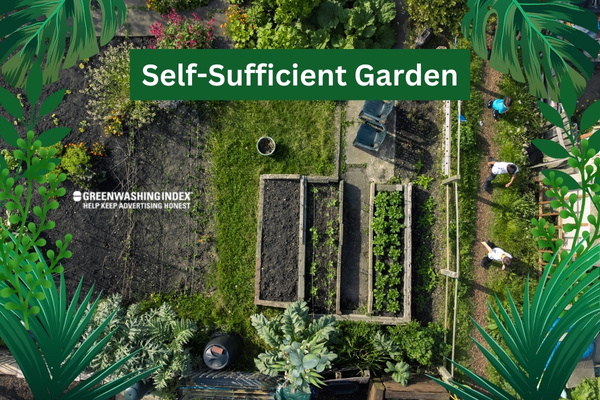As someone who cares about the planet, have you ever asked yourself how you can make your eco-friendly home dreams a reality? If so, then I’m guessing that you’re looking for simple and feasible ways to start. The good news is, that it’s totally possible to transform your living spaces into green homes, and you’ve just landed in the right place to get started!
Turning your house into an eco-friendly home means integrating sustainable practices into your everyday life. From creating a more energy-efficient environment to reducing waste and choosing non-toxic products—every small step goes a long way.
To help you on this journey towards sustainable living, here’s a straightforward guide with 10 easy steps that will not only minimize your carbon footprint but also save you in the process!
What You’ll Gain Here:
- A plan of action for transitioning towards an eco-friendly lifestyle
- Tips on implementing water conservation techniques at home
- Knowledge of how to create natural cleaning solutions
- An understanding of waste reduction methods and their impact
- Insight into modern technologies that support greener living.
Ten Simple Steps to Greening Your Home
Transforming your living space into an eco-friendly home is perhaps one of the most significant steps you can take towards sustainable living. It may sound like a daunting task but don’t worry. With a few minor changes and swaps, we can all participate in creating a healthier environment. Let’s explore ten attainable steps to achieve this differing lifestyle:
1. Install LED light bulbs

With approximately 75% less energy being used as compared to standard incandescent lights, LED bulbs are a fantastic and easily implemented method of enhancing energy efficiency in your home. Not only will this significantly reduce your overall power demand, but the lasting durability of these LEDs translates to fewer replacements and thus reduces waste as well.
- Step 1: Purchase LED light bulbs from any professional lighting or general retail stores
- Step 2: Replace all incandescent echoes in your home with these LEDs
- Step 3: Dispose of the old bulbs responsibly to minimize waste
2. Invest in Water-saving Appliances
Implementing low-flow showerheads and toilets is a surefire way of saving substantial amounts of water every day. This not only conserves a crucial resource but also simultaneously cuts back on your monthly utility expenses, thereby making it an incredibly worthwhile investment.
- Step 1: Shop for certified low-flow appliances
- Step 2: Install these new appliances correctly, either through DIY methods or by hiring professionals
- Step 3: Make regular use of these appliances to maximize their benefit.
3. Implement Composting at Home
Composting is an effective method to both reduce household wastage and improve soil quality by recycling food scraps into nutrient-enriched soil through natural decomposition over time.
- Step 1: Start collecting suitable organic kitchen waste (such as vegetable peels or coffee grounds)
- Step 2: Create a compost pile or get a compost bin for your yard
- Step 3: Regularly add to the compost \and turn it every few weeks
4. Use Natural Cleaning Solutions

By using homemade cleaning solutions created from natural ingredients like vinegar, lemon juice, or baking soda, you can maintain cleanliness without subjecting yourself or the environment to harmful chemicals found in many store-bought products.
- Step 1: Gather all the necessary natural ingredients
- Step 2: Prepare various cleaning solutions
- Step 3: Use these concoctions for different household chores like cleaning windows, floors, kitchen counters, etc.
5. Opt for Solar Energy Utilization
Using solar-powered chargers can significantly reduce your dependence on electricity generated from fossil fuel resources which often have detrimental environmental effects.
- Step 1: Purchase a quality solar charger that suits your requirements
- Step 2: Install the charger in an area with maximal sunlight exposure
- Step 3: Regularly maintain the charger for optimal performance
6. Switch to Reusable Shopping Bags
By substituting disposable plastic shopping bags with reusable alternatives, you can substantially decrease plastic waste contributing towards landfill accumulation or marine pollution.
- Step 1: Buy a sturdy and stylish reusable bag that you like
- Step 2: Bring this bag along with you every time you shop
- Step 3: Avoid taking plastic bags from stores whenever possible
7. Embrace Bamboo Products

Choosing bamboo products over their traditional plastic alternatives fosters sustainable farming practices while also helping to reduce damaging waste creation.
- Step 1: Identify daily items that could be replaced by bamboo counterparts (like toothbrushes)
- Step2: Purchase these bamboo products as replacements
- Step3: Recycle or compost the Bamboo product responsibly after usage
8. Integrate Energy-efficient appliances
Energy-efficient appliances minimize power consumption noticeably contributing towards reduced utility bills and improving your carbon footprint collectively making them a highly beneficial purchase in the long term.
Guide:
- Step one: Investigate energy-efficient appliances relevant to your need
- Step two: Gradually replace conventional devices with energy-efficient ones when due.
- Step three: Track reductions in your monthly utility bills after installing these efficient appliances
9. Try Cloth Diapers for Babies
Conventional disposable diapers constitute an alarming amount of landfill waste. In contrast, cloth diapers can be washed and reused, significantly reducing this contribution to landfill waste.
Steps:
Step 1: Consider the feasibility of switching to cloth diapers for your child
Step 2: Purchase a set of quality cloth diapers
Step 3: Pertinently wash and sanitize these cloth diapers after each use.
10. Choose Organic Food

Consuming organic food promotes sustainable farming practices while ensuring that what we ingest is free from harmful agricultural chemicals. Furthermore, buying organic food generates vital income for local farmers dedicated to maintaining such ethical farming methods.
Process:
- Step one: Learn about the benefits of organic foods for health and the environment.
- Step two: Start shopping at local farmer’s markets or in the organic section at grocery stores
- Step three: Incorporate more organically grown ingredients into your meals.
Embracing the Eco-Friendly Home Lifestyle
Living in an eco-friendly home isn’t just about the physical modifications we make to our environment; it’s a way of life. It requires a committed mindset and an understanding that each small step we take contributes to the bigger picture.
Making Eco-conscious Choices Everyday
Consistency is key when cultivating an eco-friendly lifestyle. Just like hitting the gym or learning a new language, our dedication and daily actions greatly influence our progress.
- Be mindful of energy use: I’ve found that simply being more aware of my energy consumption has made a huge difference. I am switching off lights when leaving a room, using a solar charger for my devices, and unplugging electronics when not in use are all habits I’ve cultivated.
- Be wise about waste: Another daily choice is ensuring proper waste disposal. Implementing composting at home and recycling effectively can dramatically reduce the amount of trash that ends up in landfills.
- Choose sustainable products: The market today offers multiple green options for everything from cleaning solutions to food to personal care items.
Maintaining eco-conscious decisions every day forms good habits, reducing our carbon footprint over time.
Current Advancements In Eco-Friendly Homes
In the pursuit of going green, technological developments have played a significant role. Embracing these advancements can make our homes smarter, more efficient, and kinder to Mother Earth.

Modern Technologies for Greener Living
The appeal of transforming one’s home into an eco-friendly haven stems not only from an environmental perspective but also from a financial standpoint. Incorporating such technologies aids in energy conservation resulting in affordable utility bills. Here are some modern tech solutions that help create an eco-friendly home:
- Smart Meters: An irreplaceable part of any green-home initiative, smart meters offer real-time data about energy consumption helping you understand when and where you’re using the most power. By alerting you to your peak usage periods, it facilitates making informed decisions about your energy use.
- Energy Management Systems (EMS): An EMS helps optimize electricity consumption by automatically controlling your home’s heating and cooling based on when you’re around and when you’re not. This way, no extra unit of electricity is wasted.
- Smart Thermostats: Taking air conditioning a notch higher, smart thermostats learn from your habits over time and adapt accordingly to maximize efficiency without compromising comfort.
- High-efficiency Water Heaters: Go tankless with modern water heaters that provide hot water only as it’s needed thereby eliminating standby heat losses seen in traditional storage water heater tanks.
- Solar Panels: Harnessing the power of sun rays directly translates into sizable slashes on utility bills without causing harm to the environment.
Why Opt for an Eco-Friendly Home?
Choosing an eco-friendly home is not merely about following the latest trend; it’s a lifestyle shift with expansive benefits. More than being good for your conscience, a green home can be good for your health and your wallet. Let’s delve into why sustainability at home truly matters.
Living in an eco-friendly home provides countless advantages. Here are my top reasons to transition towards this lifestyle:
- Energy efficiency: Green homes use energy from renewable sources such as solar and wind power and use it more efficiently, significantly reducing energy bills over time.
- Water conservation: Implementing practices like using water-saving appliances and reusing rainwater can drastically cut down on water usage.
- Improved Health: An eco-friendly home is a healthy home. Natural cleaning solutions minimize exposure to harmful chemicals, while organic food options reduce ingestion of pesticides.
- Waste reduction: Following principles like “reduce, reuse, recycle” can substantially cut down household waste that ends up in landfills.
- Cost-effective in the long run: Although some eco-friendly products or technologies may have higher upfront costs, their high efficiency and durability prove economical over time.
In essence, an eco-friendly lifestyle can make you healthier while saving money and resources- what’s not to love?
How We Create Impact on the Environment By Making Our Home Eco-Friendly?
Adopting an eco-conscious lifestyle throughout our homes significantly reduces the adverse effects we have on our environment:
- Reduced Carbon Footprint: An energy-efficient house generates less greenhouse gases compared to conventional homes due to improved insulation and smart technologies.
- Conservation of Natural Resources: Energy-efficient appliances utilize reduced amounts of natural resources collectively lowering demand for these limited assets.
- Preservation of Ecosystems: Choosing organic food supports sustainable farming practices that nourish biodiversity instead of depleting it.
- Minimizing Waste Contribution: Incorporating waste reduction and composting at home decreases the volume of waste reaching our landfills, reducing environmental pollution.
FAQs
What is an eco-friendly home?
An eco-friendly home, or a sustainable living space, focuses on minimizing harmful impacts to the environment by maximizing energy efficiency, water conservation, and waste reduction through using non-toxic products and natural cleaning solutions.
How can I make my house eco-friendly on a budget?
You can make your house more environmentally friendly without breaking the bank by opting for energy-efficient LED light bulbs, using water-saving appliances, composting kitchen waste at home and switching to reusable shopping bags.
What are the long-term benefits of having an eco-friendly home?
Long-term benefits of an eco-friendly home include substantial savings on utility bills due to increased energy efficiency and reduced water usage. Additionally, it provides a healthier living environment due to less exposure to chemicals and toxic materials.
How can I reduce my carbon footprint at home?
You can reduce your carbon footprint at home by switching to renewable sources of energy like solar power. Invest in energy-efficient appliances, lower water consumption with efficient fixtures, and cultivate habits like composting and recycling.
Conclusion
Living in an eco-friendly home isn’t only a rising trend but a responsibility we all share for the health of our planet. Sustainable living is about making conscientious choices that help reduce pollution, conserve resources, and promote environmental preservation.
The journey to creating an inclusive environment begins at home. Every step towards an eco-friendly home sends ripples of change, encouraging others and ultimately co-creating a healthy world for generations to come.



